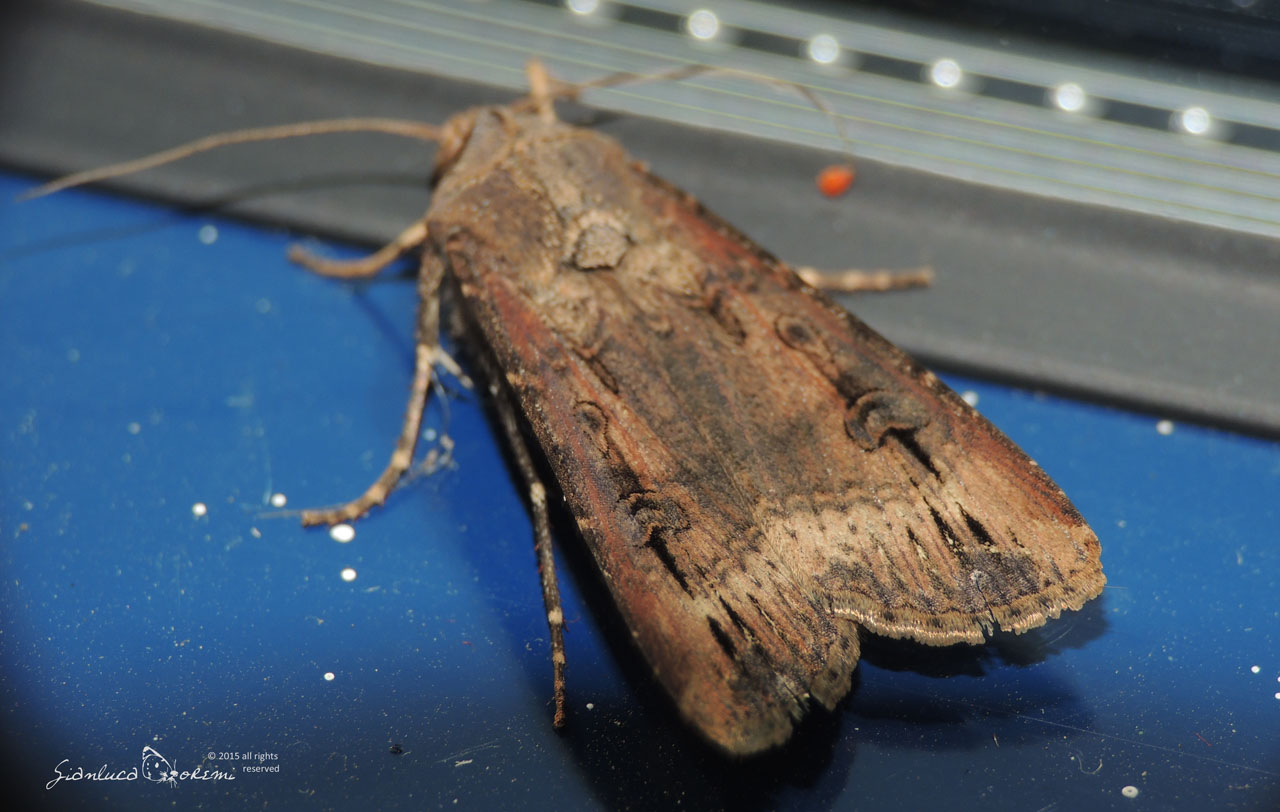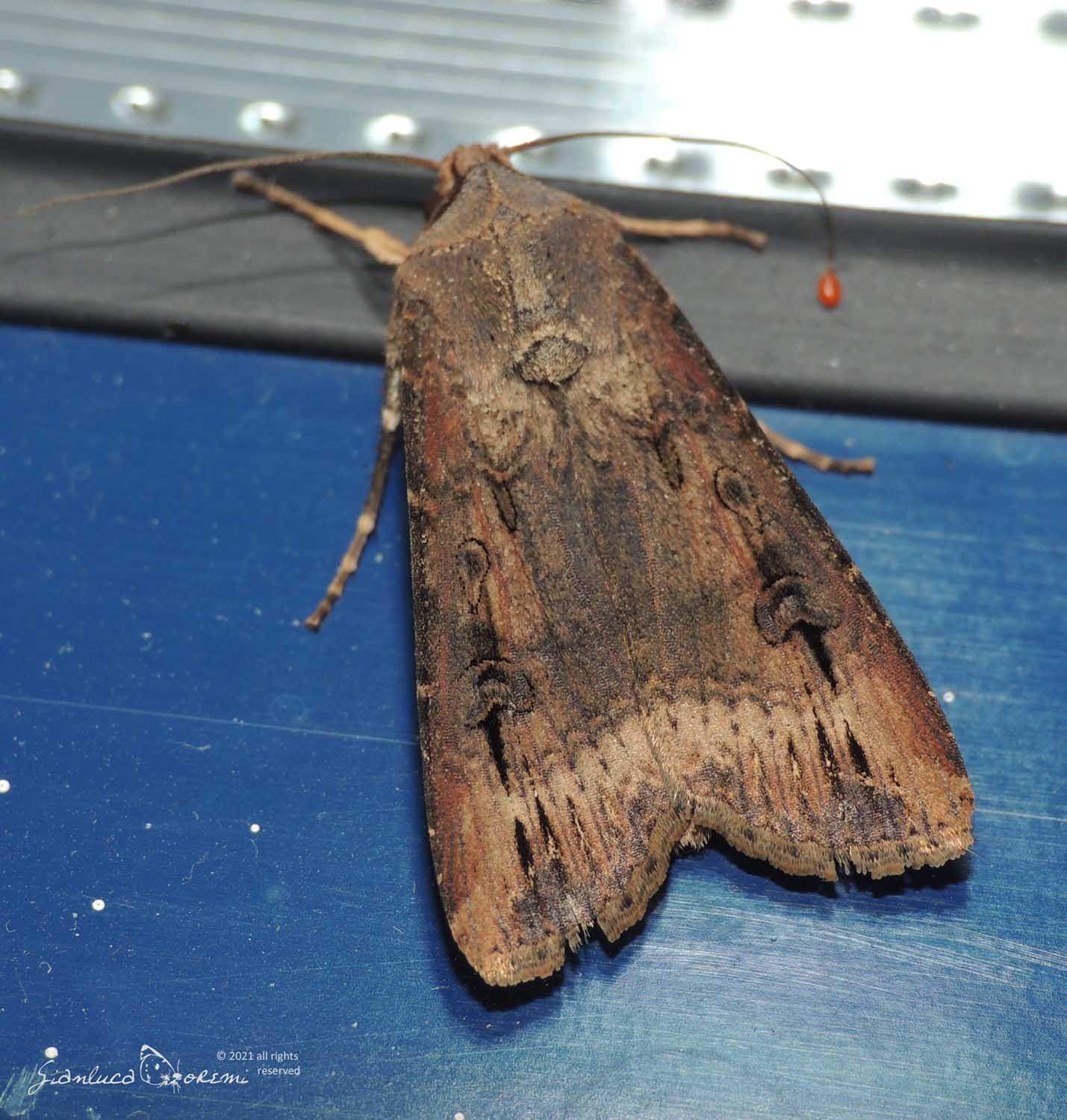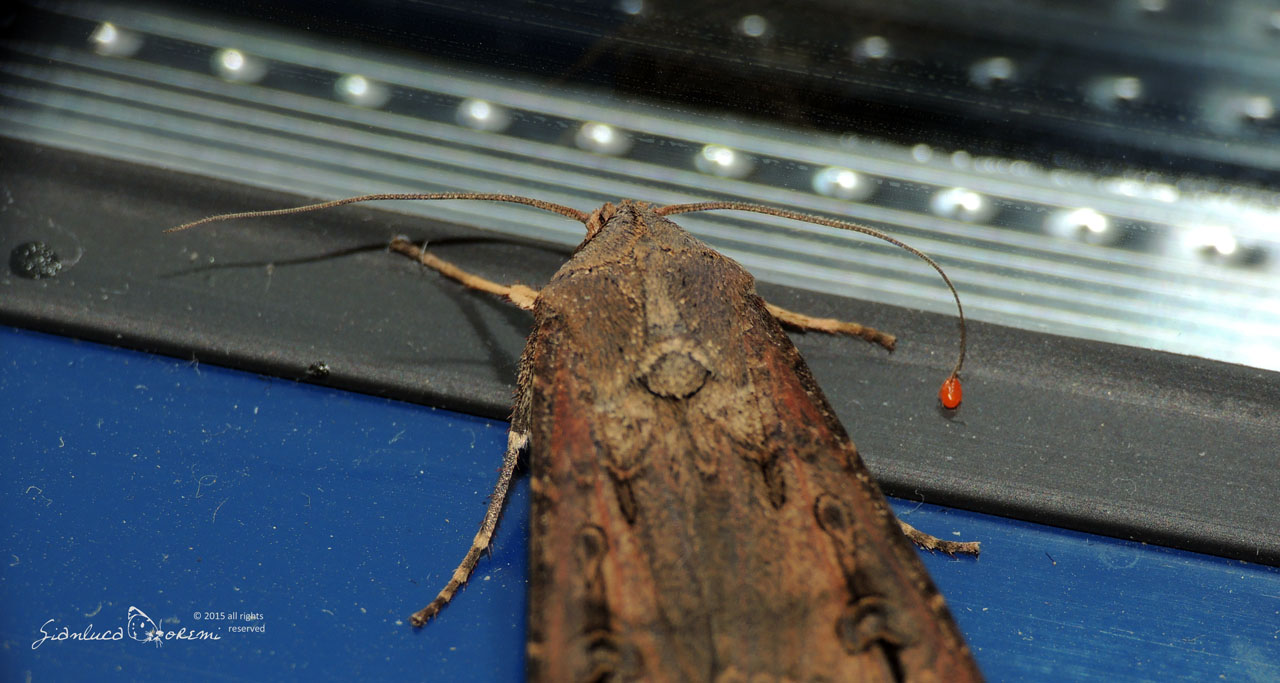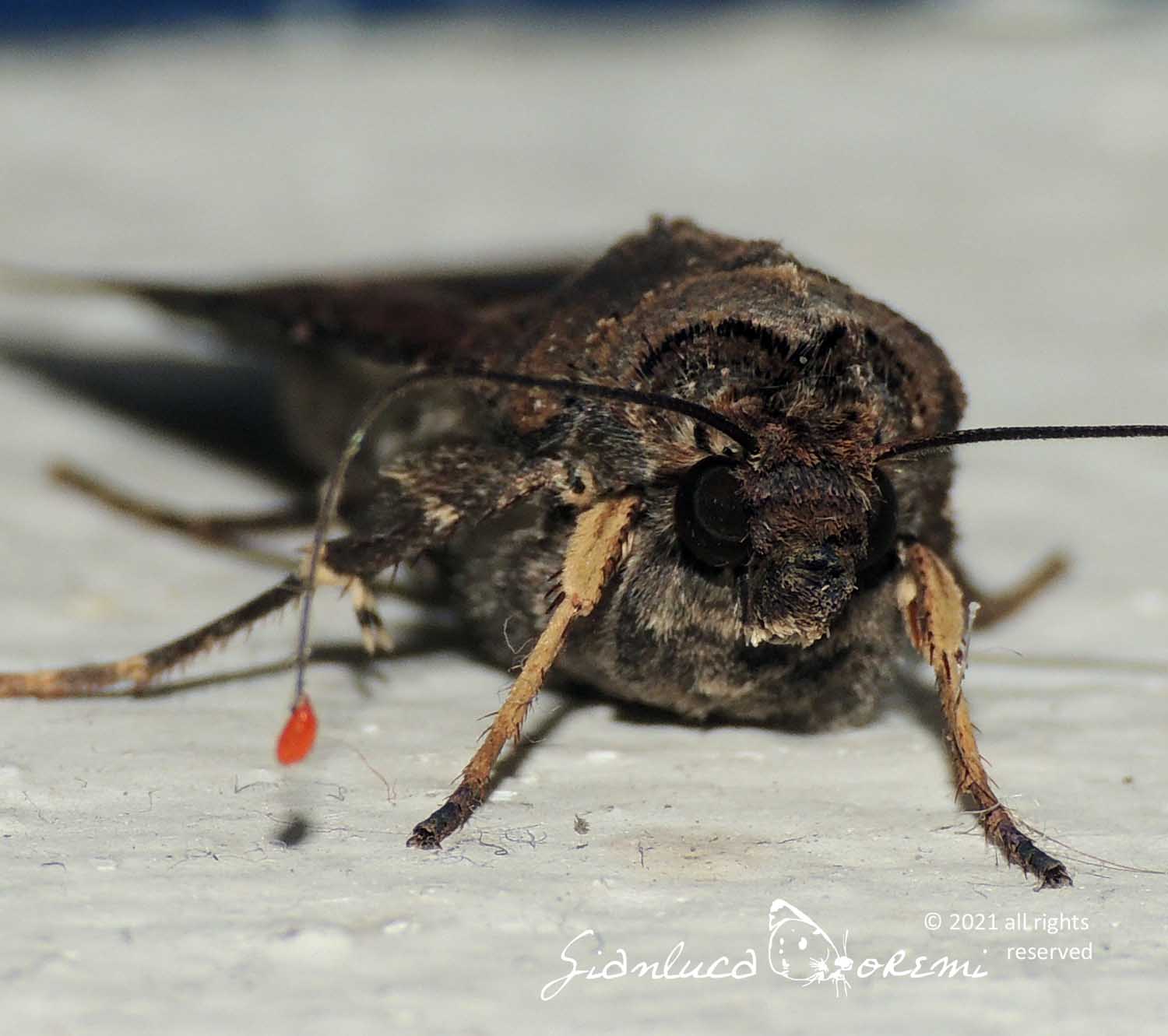Agrotis ipsilon
(Hufnagel, 1766)
-
 Subfamily: Noctuinae
Subfamily: Noctuinae -
 Wingspan: 35-50 mm
Wingspan: 35-50 mm -
 Flight period: Mar - Nov
Flight period: Mar - Nov -
 Spread: Common
Spread: Common -
 Host plants: Polyphagous
Host plants: Polyphagous
Information
The Agrotis ipsilon also called Dark Sword-grass is a moth of the Noctuidae family, subfamily Noctuinae, with wingspan of 35-50 mm.
Widespread throughout Europe including Iceland *
Cosmopolitan moth, its range extends throughout North America, Asia, Australia and Africa in the following states:
Algeria, Angola, Egypt, Ethiopia, Gambia, Ivory Coast, La Reunion, Libya, Madagascar, Mauritania, Morocco, Nigeria, Somalia, South Africa, Sudan, Tunisia, Zimbabwe.
In Italy it is also present in the islands. *
The base color of the front wings of the Agrotis ipsilon is greyish brown, with three stigmata, one kidney-shaped, one drop-shaped and one elongated,
they are generally pale in color with dark edges. The background color shows some variability in the intensity of the brown color.
Two parallel wavy dark lines cross the post-discal region separating the termen which is a light ocher washed out with a series
of darker pointed spots between the veins along the edge. Characteristic is a blackish design in the shape of an arrow or “Y” .
The hind wings are whitish in color, with dark veins and apex dusted with light brown.
Head, thorax and abdomen are in the background color of the front wings, with a moderate down. **
The Agrotis ipsilon , a difference from the related species of the Agrotis segetum , is a migratory species with seasonal migratory phases.
In fact, adults tend to move from dry areas to a more humid area, sometimes causing concentrations that are harmful to crops.
This moth has more generations per year. In Europe, adults are visible from March to November. ***
Wintering occurs in the larva or chrysalis stage.
The larvae are about 40-50 mm long, of a dark gray color sometimes translucent in appearance, dotted with black and with a lighter band on the back.
In spring, the larvae may have a brief trophic activity before becoming pupae.
The chrysalis is light brown, shiny. **
It prefers sandy soils such as coastal dunes but can be found in many other habitats with a prevalence of nutrient-poor places, often stony.
The decrease of the above specified typologies of territory has created a notable reduction in the population of this moth.
The species is considered as harmful, the damage is determined by the larval stages; that small erosions of the leaves occur, by the young larvae and, subsequently,
deeper damage occurs in proportion to the development of the larvae.
The larva is polyphagous, it feeds on Chenopodiaceae, Rosaceae and Solanaceae, it is often encountered on chard, corn, vegetable crops.
* Lepidoptera mundi https://lepidoptera.eu/ - Fauna Europea https://fauna-eu.org/
** Bestimmungshilfe für die in Europa nachgewiesenen Schmetterlingsarten - http://lepiforum.de/
*** Roland Robineau, Guide de papillons nocturne de France, Delachaux et Niestlé, 2011 p. 159







 EN
EN ITA
ITA
Social and publications